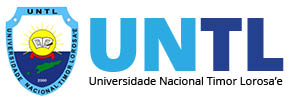Utilize este identificador para referenciar este registo:
http://repositorio.untl.edu.tl/handle/123456789/103| Título: | A utilização de materiais didácticos no ensino da matemática ao nível do Ensino Secundário de Timor-Leste |
| Autores: | Fernandes, José António Lopes, Venâncio |
| Palavras-chave: | Materiais didácticos Ensino e aprendizagem da matemática Ensino secundário Professores de Matemática do ensino secundário de Timor-Leste Didactic materials Teaching and learning of mathematics Secondary school Secondary school mathematics teachers of East-Timor |
| Data: | 2010 |
| Resumo: | A presente investigação teve como principal objectivo conhecer a utilização dos materiais
didácticos nas salas de aula de Matemática do ensino secundário de Timor-Leste. No estudo
usou-se uma metodologia de natureza quantitativa, assumindo um carácter fundamentalmente
descritivo, embora revestindo também, por vezes, um carácter comparativo.
Participaram no estudo 95 professores de Matemática do ensino secundário de Timor-
Leste, a quem foi aplicado um questionário no ano lectivo 2009/2010, constituído por duas
partes: na primeira parte questionam-se os respondentes sobre dados pessoais e profissionais; e
na segunda parte incluem-se nove questões principais relacionadas com os objectivos de
investigação, com vários itens fechados e alguns abertos.
Em termos de resultados, concluiu-se que, face ao número de alunos, são escassos os
materiais didácticos existentes nas escolas secundárias de Timor-Leste, salientando-se os
manuais escolares e outros livros de Matemática, seguindo-se as revistas de Matemática, os
materiais de desenho, as calculadoras não gráficas e os computadores. Numa proporção ainda
menor, encontram-se os geoplanos, as caixas de sólidos e as calculadoras gráficas. O facto de
se ter verificado que os materiais didácticos existentes em maior número também eram usados
mais frequentemente realça a necessidade de apetrechar as escolas com esses materiais.
O quadro negro, o manual escolar, as fichas de trabalhos, os materiais manipuláveis e o
caderno diário são materiais didácticos frequentemente usados pelos professores e os alunos
nas aulas de Matemática do ensino secundário de Timor-Leste para, entre outros fins, escrever a
teoria, resolver exercícios, desenhar gráficos, esquemas, tabelas e figuras, consultar quando o
aluno e o professor têm dúvidas, apresentar a teoria, trabalhar em grupo e resolver tarefas.
Para os professores, entre outras, as vantagens dos materiais manipuláveis residem em
facilitar o ensino e a aprendizagem da matemática e ajudar os alunos a adquirirem os conceitos
matemáticos, enquanto a sua maior desvantagem reside no muito tempo que o seu uso requer.
Já no caso dos manuais escolares, a sua principal vantagem reside em permitir esclarecer
dúvidas sobre os conteúdos que estão a ser estudados, enquanto as suas maiores desvantagens
resultam de serem escritos em língua indonésia, o que dificulta a compreensão dos alunos, e
apresentarem um tratamento complicado dos tópicos, exigindo que os professores os tenham de
estudar antes de dar as aulas. The present research aims to know the use of didactic materials in the mathematics classes of the secondary level in East Timor. The study carried out a quantitative methodology, assuming mainly a descriptive design, although sometimes it assumes a comparative design. The participants were 95 secondary school teachers of mathematics of East-Timor. Data were collected by a questionnaire applied during the school year of 2009/2010. It is divided into two parts: in the first, the respondents were asked about personal and professional data; and in the second, 9 main questions are included related to the research objectives with several closed and some open items. Concerning the results we conclude that the didactic materials available are very limited at secondary schools in East Timor, considering the number of pupils. The textbooks and other books related to mathematics are the didactic materials existent in large number in schools, followed by mathematics magazines, drawing materials, the scientific calculators and computers. In a less number it can be find the geoplans, the boxes of solids and the graphing calculators. Because of the didactic materials available in higher number are also used more frequently, we suggest to full the schools with these materials. The blackboard, the textbook, the handworks, the manipulative materials and the notebooks are didactic materials which are usually used by teachers and pupils in mathematics classes of secondary schools in East-Timor. They are used to write the theory, to solve exercises, to draw graphics, schemes, tables and figures, to solve doubts to teachers and pupils, to exemplify the theory, to work in groups and to get solution for their tasks. For the teachers, among others, the advantages of the manipulative materials consist in facilitating the teaching and learning of mathematics and to help pupils to acquire the mathematics concepts, and its main disadvantage consists in the much time spent in their use. In what concerns the textbooks, its main advantage is to make possible to solve the pupils’ doubts about the contents they are learning. On other hand, their main disadvantages come from both the language in which they are written: the Indonesian language, what makes the pupils’ comprehension difficult, and to present the topics in a complicated way, requiring from teachers much study before classes. |
| Descrição: | Dissertação de mestrado em Ciências da Educação ( área de especialização em Supervisão Pedagógica na Educação Matemática) |
| URI: | http://repositorio.untl.edu.tl/handle/123456789/103 |
| Aparece nas coleções: | Trabalhos sobre Timor |
Todos os registos do Repositório UNTL estão protegidos pelas leis do direito de autor.










